Having produced a Bray-Curtis dissimilarity with my Hellinger-transformed data (26 samples, 3000+ species/OTUs), I went on to build a MDS plot. I got the following metrics:
Dimensions: 2
Stress: 0.111155
Stress type 1, weak ties
Two convergent solutions found after 2 tries
Scaling: centring, PC rotation, halfchange scaling
Species: expanded scores based on ‘ALG_Hellinger’
However, the corresponding Shepard's plot looked as follows:
Which, although achieving good fits seems as if the BC dissimilarity has not enough resolution to differentiate across samples. Is this right?
Testing it through ANOSIM, I got the following,
ANOSIM statistic R: 1
Significance: 0.001
Permutation: free
Number of permutations: 999
Upper quantiles of permutations (null model):
90% 95% 97.5% 99%
0.123 0.166 0.203 0.249
Dissimilarity ranks between and within classes:
0% 25% 50% 75% 100% N
Between 97 154.0 212.0 266.50 325 229
Cliona celata complex 19 32.0 46.0 59.00 66 21
Cliona viridis 3 26.5 37.5 48.50 60 6
Dysidea fragilis 56 56.5 57.0 59.50 62 3
Phorbas fictitius 1 18.5 48.5 79.75 96 66
And ADONIS told me the same:
Permutation: free
Number of permutations: 999
Terms added sequentially (first to last)
Df SumsOfSqs MeanSqs F.Model R2 Pr(>F)
SCIE_NAME 3 7.8738 2.62461 43.049 0.85445 0.001 ***
Residuals 22 1.3413 0.06097 0.14555
Total 25 9.2151 1.00000
---
Signif. codes: 0 ‘***’ 0.001 ‘**’ 0.01 ‘*’ 0.05 ‘.’ 0.1 ‘ ’ 1
This is, the differences among the samples are significant, but the MDS ordination seems somewhat misleading.
How can I test another aspect of the MDS or change anything about this analysis, if even needed?
Thank you in advance!
André